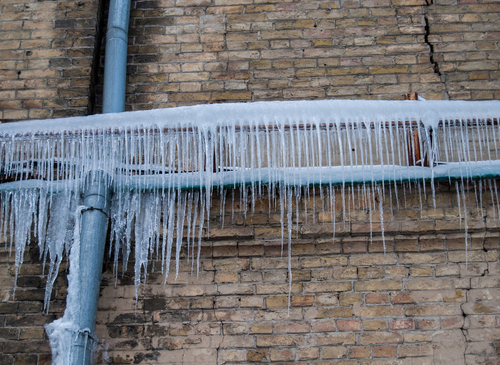The article in the next paragraphs involving Preventing and dealing with frozen pipes is without a doubt informative. Read it for your own benefit and figure out what you think of it.

Winter can damage your pipes, especially by freezing pipelines. Right here's exactly how to avoid it from happening and what to do if it does.
Introduction
As temperature levels decline, the threat of frozen pipes rises, possibly resulting in costly fixings and water damages. Understanding just how to avoid icy pipelines is essential for homeowners in cold environments.
Recognizing Frozen Pipelines
What causes pipelines to ice up?
Pipelines ice up when subjected to temperature levels below 32 ° F (0 ° C) for prolonged durations. As water inside the pipes ices up, it broadens, taxing the pipe walls and possibly creating them to burst.
Risks and damages
Frozen pipelines can bring about supply of water interruptions, residential or commercial property damage, and expensive repairs. Burst pipelines can flooding homes and create considerable architectural damages.
Indications of Frozen Pipeline
Identifying icy pipelines early can avoid them from bursting.
Just how to recognize frozen pipes
Seek reduced water flow from taps, unusual smells or noises from pipelines, and visible frost on revealed pipes.
Avoidance Tips
Shielding susceptible pipelines
Cover pipes in insulation sleeves or make use of heat tape to safeguard them from freezing temperatures. Focus on pipelines in unheated or external locations of the home.
Heating strategies
Keep indoor spaces appropriately heated, particularly locations with plumbing. Open cabinet doors to allow warm air to distribute around pipes under sinks.
Securing Outside Pipes
Yard pipes and outside faucets
Detach and drain garden tubes prior to wintertime. Set up frost-proof spigots or cover outdoor taps with shielded caps.
What to Do If Your Pipes Freeze
Immediate actions to take
If you suspect icy pipes, maintain taps open to alleviate stress as the ice melts. Make use of a hairdryer or towels taken in hot water to thaw pipelines slowly.
Long-Term Solutions
Architectural modifications
Take into consideration rerouting pipes far from exterior walls or unheated locations. Add added insulation to attics, basements, and crawl spaces.
Updating insulation
Buy top notch insulation for pipelines, attic rooms, and walls. Appropriate insulation helps preserve regular temperature levels and reduces the danger of frozen pipes.
Verdict
Avoiding icy pipelines calls for aggressive measures and quick responses. By comprehending the causes, signs, and preventive measures, property owners can safeguard their plumbing throughout winter.
5 Ways to Prevent Frozen Pipes
Drain Outdoor Faucets and Disconnect Hoses
First, close the shut-off valve that controls the flow of water in the pipe to your outdoor faucet. Then, head outside to disconnect and drain your hose and open the outdoor faucet to allow the water to completely drain out of the line. Turn off the faucet when done. Finally, head back to the shut-off valve and drain the remaining water inside the pipe into a bucket or container. Additionally, if you have a home irrigation system, you should consider hiring an expert to clear the system of water each year.
Insulate Pipes
One of the best and most cost-effective methods for preventing frozen water pipes is to wrap your pipes with insulation. This is especially important for areas in your home that aren’t exposed to heat, such as an attic. We suggest using foam sleeves, which can typically be found at your local hardware store.
Keep Heat Running at 65
Your pipes are located inside your walls, and the temperature there is much colder than the rest of the house. To prevent your pipes from freezing, The Insurance Information Institute suggests that you keep your home heated to at least 65 degrees, even when traveling. You may want to invest in smart devices that can keep an eye on the temperature in your home while you’re away.
Leave Water Dripping
Moving water — even a small trickle — can prevent ice from forming inside your pipes. When freezing temps are imminent, start a drip of water from all faucets that serve exposed pipes. Leaving a few faucets running will also help relieve pressure inside the pipes and help prevent a rupture if the water inside freezes.
Open Cupboard Doors
Warm your kitchen and bathroom pipes by opening cupboards and vanities. You should also leave your interior doors ajar to help warm air circulate evenly throughout your home.

I'm very inquisitive about Prevent Frozen Pipes and I really hope you appreciated the article. Appreciated our piece of writing? Please share it. Let other people find it. Thanks for your time. Return soon.
See Availability